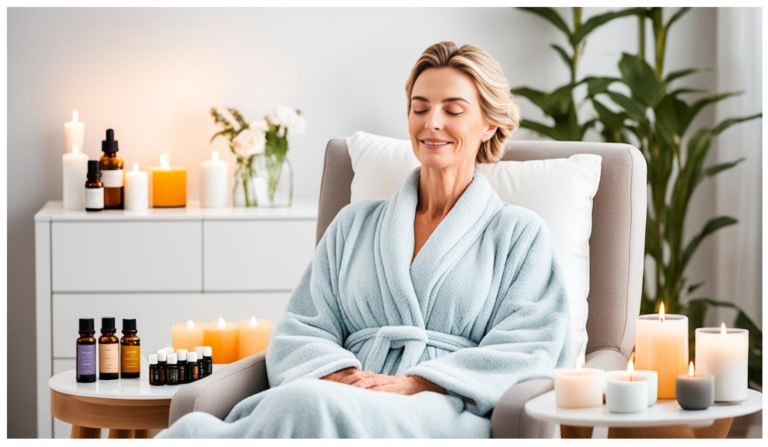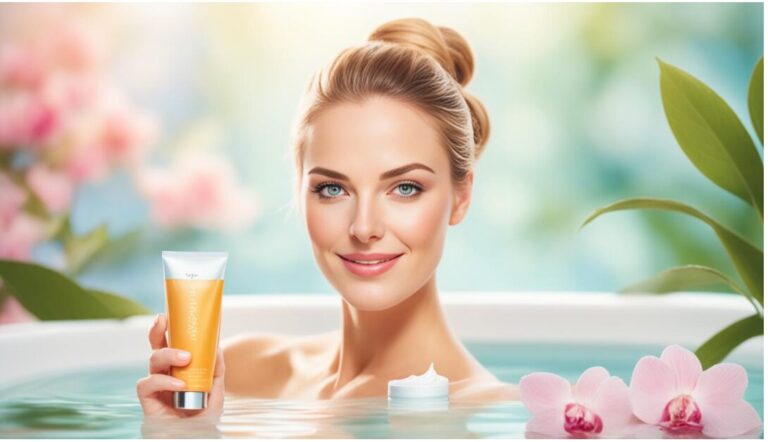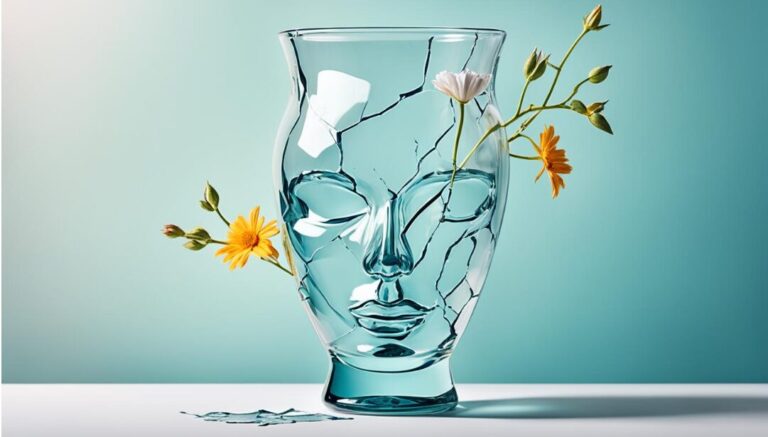Spotting Botox: How to Tell If Someone’s Had It
Did you know over 6.2 million Botox procedures were done in the U.S. in 2021? This shows how popular Botox has become. People are now curious about how to spot if someone has had Botox. This can be from simple curiosity or thinking about getting it yourself. Knowing the signs of Botox injections can be really useful.
Botox is a top choice for keeping a young look. With more people interested in spotting Botox results, many have become amateur detectives. This section will show you how to notice the subtle changes Botox brings to the face. It prepares you for a deeper look into recognizing Botox.
Key Takeaways:
- Botox procedures are increasingly common, with over 6.2 million treatments performed annually in the U.S.
- Understanding how to tell if someone has had Botox can satisfy curiosity or inform personal decisions.
- Recognizing the signs of Botox injections involves observing specific facial changes and movements.
- This section introduces the basic signs of Botox, setting the foundation for more detailed analysis.
- Spotting Botox results enriches your knowledge of cosmetic enhancements and their effects on appearance.
Introduction to Botox and Its Popularity
Botox is a well-known name in both medical and cosmetic fields. It has become very popular for its effectiveness and versatility. Originally, it was used for medical issues like muscle spasms and too much sweating. Now, it’s linked with making faces look younger and smoother.
In the world of facial rejuvenation, botox is known for smoothing out wrinkles and fine lines. It’s a non-invasive way to look younger without surgery. This makes it a top choice for those wanting anti-aging treatments with little downtime. Because of this, botox has become a key part of beauty routines in the U.S.
“Botox continues to dominate the anti-aging market due to its reliability and effective results,” says Dr. Jane Smith, a leading dermatologist.
Many people love botox for its clear results and minimal side effects. It helps boost confidence and satisfaction, making it more popular. People share their positive experiences, adding to its appeal.
Statistics from the American Society of Plastic Surgeons show more botox treatments every year. This trend proves botox is a top choice for anti-aging treatments. With support from experts and happy clients, botox remains a leader in facial rejuvenation.
Common Facial Changes from Botox
Botox treatments are very popular in the U.S. for making the face look better with little downtime. This part will talk about the main changes botox makes to the face. It will help you understand what to expect from these treatments.
Smoother Forehead
One of the first things you’ll notice is a smoother forehead. Botox relaxes the forehead muscles. This reduces lines and creases, making you look younger and more refreshed. It gets rid of the lines that come from stress and aging.
Lifted Brows
Another effect of botox is lifted brows. By injecting botox in specific forehead areas, it looks like your brows are lifted naturally. This makes your eyes look bigger and your face more awake and young.
Reduced Crow’s Feet
Botox also helps with crow’s feet, those fine lines around the eyes. These lines come from smiling, squinting, and other facial movements. Botox relaxes the muscles that cause these lines. This makes your skin smoother and you look younger.
Botox Injection Sites Explained
Learning about botox injection starts with knowing where to inject on the face. These spots help control facial muscles for better looks. This part talks about how experts pick safe and effective spots for botox.
Experts in botox know the best spots for great results. Each facial injection point has a special role in making you look better:
- Forehead: Shots here smooth out lines between the eyebrows and on the forehead.
- Brow Area: Shots around the brow make the eyes look less tired by lifting the area.
- Crow’s Feet: Shots at the eyes’ corners reduce the lines that show age.
- Nose: Treating “bunny lines” on the nose lessens wrinkles when you wrinkle your nose.
- Mouth: Shots here make lines around the mouth less noticeable, giving you a younger look.
Let’s dive into some botox techniques and where they’re used:
| Facial Injection Point | Primary Technique | Outcome Objective |
|---|---|---|
| Forehead | Horizontal Injection | Smooth Lines |
| Brow Area | Vertical Injection | Lifted Brows |
| Crow’s Feet | Angled Injection | Reduce Wrinkles |
| Nose | Horizontal Injection | Minimize Lines |
| Mouth | Curved Injection | Smooth Lines |
Using botox injection techniques at these facial injection points makes cosmetic injectables work best. This leads to results that look natural and work well.
How to Tell If Someone Has Had Botox?
Spotting botox treatments can be tricky. Yet, some facial clues can suggest recent cosmetic work. By keeping an eye on these signs, you can get better at spotting botox.
Expression Limits
One subtle sign of botox is a limited face range. Those who’ve had botox find it hard to raise their eyebrows or frown deeply.
Skin Texture Differences
Looking at skin texture is another way to spot botox. After botox, the skin might look smoother or tighter. This is a common sign of botox.
Symmetry Changes
Checking facial symmetry can also be telling. Botox might cause slight facial asymmetry, especially if the injections were off balance.
| Indicators | Description |
|---|---|
| Expression Limits | Reduced ability to showcase full range of facial emotions like raising eyebrows. |
| Skin Texture Differences | Smoother, tauter skin appearance. |
| Symmetry Changes | Minor asymmetries indicating uneven injections. |
By paying attention to these signs, you can get better at identifying botox treatments. You’ll also spot the subtle signs of botox more easily.
Recognizing Botox Results in the Forehead Area
Forehead botox results show smoother skin without fine lines or deep wrinkles. A key sign is the lack of forehead muscle movement, making the face look younger and calmer. The skin might also look slightly shiny, which is a sign of facial rejuvenation.
Experts say a smooth forehead, especially in older people, often means botox was recently used.
Spotting botox effects means looking for less creases and tight skin. Here’s a table to help explain more:
| Characteristic | Forehead Botox Results |
|---|---|
| Skin Texture | Smooth and slightly shiny |
| Movement | Limited muscle mobility |
| Wrinkles | Notably diminished or absent |
| Overall Appearance | Younger, more rested look |
Signs of Botox Injections Around Eyes
Botox injections around the eyes make subtle changes that are easy to spot. They focus on reducing wrinkles and giving a lifted look. This section will show you what to look for in the eye area after botox.
Wrinkle Reduction
One clear sign of eye area botox is fewer wrinkles, especially around the outer eye corners. This area is known as crow’s feet. After botox, the skin looks smoother and younger, showing less crow’s feet.
This means the skin is more refined and less wrinkled. It shows the botox is working well in this area.
Lifted Look
A lifted look is another sign of botox around the eyes. Botox reduces muscle activity that makes the skin sag. Identifying botox around the eyes means seeing slightly higher eyebrows and more open, youthful eyes.
This results in a refreshed and younger look. It’s why botox treatments are popular in this area.
| Botox Effect | Signs |
|---|---|
| Wrinkle Reduction | Smoother eye area, less prominent crow’s feet |
| Lifted Look | More arched eyebrows, youthful eye area |
Botox Detection Tips: What Experts Look For
Dermatologists and plastic surgeons are great at spotting cosmetic procedure signs. They use special skills to find expert botox indicators. Here are some main ways they do it:
- Muscle Movement Analysis: They look at how muscles move in treated areas. If muscles don’t move much, especially in the forehead and eyes, it’s a big clue.
- Skin Texture Changes: Cosmetic procedure signs can make skin look too smooth. This is often seen after botox in the forehead and around the eyes, where skin might look shiny.
- Asymmetric Facial Features: Botox tries to make faces symmetrical, but sometimes it doesn’t work out evenly. This can be a sign of botox.
- Eyebrow Positioning: If eyebrows look too high, it might mean botox was used. This is a small but telling sign.
Learning these botox detection tips helps you understand cosmetic procedure signs better. It’s useful whether you’re a pro in the field or just curious.
Identifying Botox Treatments in Men and Women
Men and women have different botox effects due to their unique muscle structures and goals. Both genders want botox for rejuvenation, but the results and how it’s applied differ.
Men have thicker muscles in the forehead and around the eyes than women. This means they need more botox to get the look they want.
Men and women also have different beauty goals. Women want a softer, more refined look. Men aim for a youthful appearance that still looks natural, avoiding skin that looks too smooth.
It’s important to know these differences to spot gender-specific botox signs:
| Aspect | Botox in Men | Botox in Women |
|---|---|---|
| Muscle Structure | Thicker, requiring more units | Thinner, requiring fewer units |
| Aesthetic Goals | Subtly youthful, retaining ruggedness | Softer, more contoured appearance |
| Common Treatment Areas | Forehead, glabella, crow’s feet | Lips, forehead, crow’s feet |
| Results | Naturally smoothed with visible masculinity | Delicate smoothing with enhanced femininity |
- Botox in men often targets deeper lines on the forehead and around the eyes.
- Women may focus more on crow’s feet and fine lines for a smoother complexion.
- Subtle, natural enhancements are prioritized regardless of gender, yet the approach and application reflect distinct gender-specific botox signs.
Understanding these differences helps tailor botox treatments for men and women. This ensures a personalized and satisfying result for everyone.
Effects of Botox on Different Skin Types
Understanding how Botox affects different skin types is key to great results. Whether your skin is oily, dry, or a mix, Botox can have different effects. This part looks at how oily, dry, and mixed skin react to Botox, including recovery time, how well it works, and patient satisfaction.
Oily Skin Variations
Oily skin often reacts uniquely to Botox because of its high sebum production. People with oily skin might take a bit longer to recover as the oil can swell the injection area. But, Botox still works well, making the forehead and other areas look smooth and less oily. It can also give a matte finish, reducing the greasy look oily skin often has.
Dry Skin Concerns
For dry skin, Botox injections might make the skin more sensitive. Without the oils that protect it, dry skin can swell or turn red at first. But, once the swelling goes down, Botox can really help reduce fine lines and wrinkles. Keeping the skin well-hydrated and taking good care of it after treatment is important to keep the results.
Combination Skin Observations
Combination skin has traits of both oily and dry skin, so Botox effects can change across the face. You might see balanced reactions to Botox, with the oily areas reacting like oily skin and the dry areas needing more attention. This type of skin usually does well with Botox, as it can even out the skin for a smoother, younger look.
FAQ
What are some common signs of Botox injections?
Signs include a smoother forehead, lifted eyebrows, and less crow’s feet. Botox relaxes muscles and reduces wrinkles.
How can you tell if someone has had Botox?
Look for limited expressions, changes in skin texture, and symmetry changes. These signs can point to Botox use.
What are the typical facial changes from Botox treatments?
Treatments lead to a smoother forehead, lifted brows, and less crow’s feet. This makes one look younger.
Where are Botox injections commonly administered?
Botox is given in the forehead, around the eyes, and between the eyebrows. It targets specific muscles for desired results.
What facial areas are most affected by Botox?
The forehead and eye areas get Botox most often. Signs include fewer wrinkles and a shiny skin look in these areas.
How can you recognize Botox results in the forehead?
Look for a smooth, wrinkle-free forehead and a polished look. Experts can also help spot Botox in this area.
What are the signs of Botox injections around the eyes?
Signs include fewer wrinkles and a lifted look. This makes the eyes look younger and more refreshed.
What tips do experts use to detect Botox?
Experts look for limited facial expressions, skin texture changes, and facial asymmetry. Their trained eyes and experience help them detect Botox.
Are there differences in identifying Botox treatments in men and women?
Yes, muscle structure and aesthetic goals differ in men and women. This means observing Botox results requires specific techniques for each gender.
How does Botox affect different skin types?
Botox’s effects change with skin type. Oily skin might show fewer side effects, while dry skin needs extra care. Combination skin reacts differently, affecting patient satisfaction.



